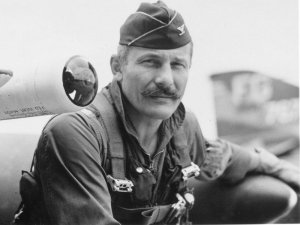 When discussing leadership we most often focus on the leader-follower dynamic. But there’s another relationship crucial to the success of any effort: the teams relationship with themselves and other teams. The leader who can lead teams to work effectively amongst themselves, and with others outside themselves, is a high performing leader.
When discussing leadership we most often focus on the leader-follower dynamic. But there’s another relationship crucial to the success of any effort: the teams relationship with themselves and other teams. The leader who can lead teams to work effectively amongst themselves, and with others outside themselves, is a high performing leader.
As a young officer in the 1990’s, I participated in a Total Quality Management “Awareness Training” event where I learned a valuable lesson about teamwork. During the training course, we divided ourselves into teams of 5 and undertook the task of building paper airplanes. It was a competition between the students to see how many paper airplanes we could make and how much money we could make. We were given a budget to spend on supplies, had to get our design approved by the customer, and meet certain performance requirements. We schmoozed our customer, he was the one with the money after all, but we took an entirely different tack with our “supplier.” We told him what we were after, and wouldn’t take “no” for an answer during the negotiations. During our negotiation, he kept stressing he had loads of “Grade A Paper.” When we were done, our “supplier” hardly felt like part of the team. We used our “Grade A Paper” well by cranking out a bunch of paper airplanes. One team managed to make a lot more paper airplanes than we did, and we were keen to know how they did it. The answer was “teamwork,” but not in the way we expected.
The teams were fairly evenly matched, Each had a mixture of old heads and new blood, officer and enlisted, experienced and innovative. But what set the winning team apart from us was who they had on their team. You see, when they looked for teammates, it wasn’t merely the people who’d been assigned to them, but their customer and their supplier. The customer wasn’t interested in all the performance specs, only a few were really important to him (distance), and the supplier had loads of “Grade B” paper (half folded sheets), “Grade C” paper (a fully folded paper airplane). If we’d seen the customer and the supplier as members of our team and included them from the beginning rather than trying to exploit each for our own purposes, we’d have had a much better chance of winning.
Therein lies the leaders role in teamwork.
Leaders’ words and actions will set the tone for relationships between internal and external teammates. If leaders see others as potential or actual teammates, so will the team, and so will those others. Leaders have to expect, inspect, and reward teamwork–doing otherwise generates a lot of resistance to progress. If we as leaders can set the expectations that those outside our organizations as well as those within are teammates, we establish an environment of mutual respect that produces a whole greater than the sum of the parts. Leaders then have to follow through, to “inspect” or measure, the level of teamwork within their organization. There cannot be a “them” and helping our teams see the others we work with as potential teammates. So it is with customers and suppliers; we reward good teamwork when we bring these people onto our team,and praise our employees for demonstrating that teamwork in their interactions with them. Just like our paper supplier, there’s likely more win-win relationships out there if we give them the chance.
Teamwork is a leadership principle worth passing on!